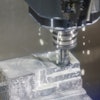
Whether it’s an iPhone or Android, most people own a mobile device. But not all mobile devices are created equal. Manufacturing and distribution organizations use handheld computers for a wide variety of applications such as material management, supply chain, quality control, asset tracking and communications. However, there is sometimes uncertainty surrounding whether to deploy consumer or rugged devices.
It is tempting to repurpose consumer devices for business purposes because they are easy-to-use and often less expensive than their rugged counterparts, but many times neglecting to invest in a rugged device can be more costly. Before investing in a handheld device businesses should consider the following.
The Work Environment
Consider where the device will be used and the durability requirements that environment necessitates. Will the device be exposed to extreme temperatures, water, dust or shock? What effect will this type of wear and tear have on your device?
Rugged handhelds must pass a series of stringent standard tests and rating systems such as drop and IP ratings, to verify their durability. These tests are designed to mimic some of the environmental strains a handheld might endure during deployment in a warehouse or on the floor of a manufacturing plant.
Consumer devices are created for the non-rugged, office environment using less durable materials that do not meet these certifications. Although consumer-grade devices can withstand everyday abuse (sometimes), where and how the product is being used should be considered. For example, Ocean Beauty Seafoods uses handhelds at its seafood processing plants in Alaska. Its old handhelds were semi-rugged and could not withstand the harsh, wet conditions and drastic temperature changes. The devices’ downtime and constant need for repair led Ocean Beauty Seafoods to deploy a full rugged device built for extreme conditions. The reliability of these new devices has helped Ocean Beauty Seafoods handle a wider variety of products and increase its supply chain visibility.
Features and Integration
It’s easy to think of what features you need today on a mobile device, but what if those needs change? For example, you know you need a handheld with a barcode scanner now, but what if in a few months you also want wireless connectivity?
Consumer-grade devices cannot be updated, but some rugged devices on the market are modular, enabling them to grow with your company’s needs. This type of future-proof technology provides a comprehensive solution for your needs today and tomorrow. Rugged devices also offer software and hardware development tools that enable you to extend functionality and seamlessly integrate new devices into your current infrastructure.
Also, don’t forget about simple features found in more rugged handhelds like extended battery life that can significantly impact your return on investment (ROI) and increase employee productivity.
User Experience
A handheld solution needs to be easy-to-use and require little training in order to provide the best ROI and a low total cost of ownership (TCO). Most consumer devices are intuitive, and the majority of your work force will probably be familiar with their set-up. Many rugged devices also now employ consumer-facing operating systems that users are familiar with such as Windows.
Besides the device’s operating system, think about how and where your work force will be using the handheld. Will they be scanning products where a pistol-grip will be more comfortable? Perhaps the device will be used outside in the sunlight where a high-resolution screen would be an asset. Options like these are available in the rugged sector so you can build a device that is customized for your employees – improving their user experience and possibly even increasing their enthusiasm about the product as it makes their job easier.
The industrial industry is constantly evolving. Selecting the correct mobile device can impact your company’s productivity and your bottom line. While consumer devices carry a smaller price tag, their TCO can exceed their rugged counterpart’s.
A VDC report on TCO found lost productivity is a leading contributor to TCO with mobile workers losing up to 80 minutes of productivity when their device failed (VDC Research Group, Inc., 2010, p. 3) With statistics like this, dependability becomes one of the most important factors. A device failure impacts multiple areas of an organization from the user to their supervisor to the IT resources responsible for managing the device.
The lesson? Find a mobile device that can withstand your work environment while offering features that can be deployed in the future, saving you from investing in another mobile solution.


















